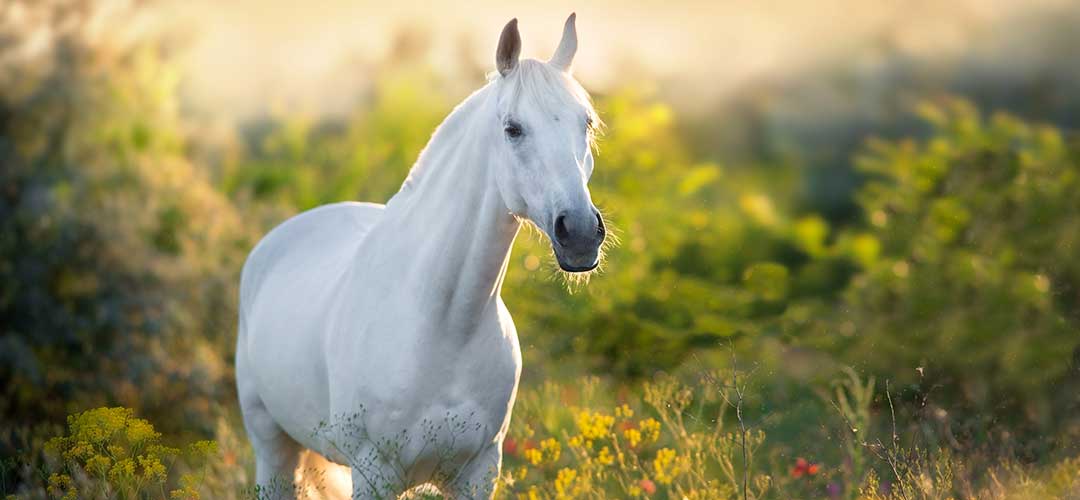
By Tony Hawkins, DVM, Valley Vet Supply Technical Service Veterinarian
Just like with people, horses are more likely to combat respiratory challenges in the colder months. Besides the drop in temperatures alone, other contributing factors include the drier air and decreased immune function in the lungs. When we’re looking at respiratory challenges impacting horses, the greatest risks include equine influenza, Rhinopneumonitis (Rhino) and strangles. To help horse owners understand each, we’re looking at these three conditions closely within a three-part article series – covering aspects from disease spread to signs, treatment considerations and prevention. Let’s begin with the topic of equine influenza.
Background
The equine influenza H7N7 subtype was first reported in the 1950s and last reported in the 1970s. The Centers for Disease Control and Prevention reports “[H7N7] is now considered to be extinct. The EIV H2N8 subtype was first reported in horses in the United States in the 1960s and still spreads in horses globally today.”
Equine influenza is spread from horse to horse through contact with infectious nasal secretions. This can occur through direct, nose-to-nose contact with an infected horse. Coughing is also a very common cause of spread, as well as contact with what we call fomites – meaning inanimate objects like feed buckets, brushes, tack, clothing and hands – that have those nasal secretions on it. It's been reported that a horse’s cough can travel as far as 150 ft, so it doesn't have to be nose-to-nose contact for this disease to spread. After horses are exposed, it's only a one- to three- day incubation time and should they become infected, they can shed for up to 14 days. Equine influenza attacks the normal immune functions of your horse’s lungs, which causes an increased susceptibility to secondary bacterial infection and bacterial pneumonia.
Signs
A cough is a pretty classic sign of flu. Horses also may demonstrate fever, nasal discharge, lethargy and loss of appetite. Some horses that become infected may not show any symptoms; they are called asymptomatic shedders.
Treatment
Most importantly, horses will need rest and supportive care, which will differ a little bit from horse to horse and case to case. Rest is very important. You don't want to exercise those horses or add any stress because that just makes things worse. The most common recommendation from the experts is to provide one week of consecutive rest for every day of fever, even if they start feeling better before that rest period is over. For horses experiencing fever or secondary bacterial pneumonia, non-steroidal, anti-inflammatory medications and antibiotics would be needed. Work closely with your veterinarian on treatment options available.
Prevention
To prevent equine influenza, consider the steps we take to shield ourselves from the flu.
Vaccination plays a very important role in prevention of disease. Should vaccinated horses become exposed, either one, it's not as serious should they become infected, or two, the vaccine will hopefully prevent the disease from taking hold. As for vaccination timing it really comes down to a few things – the immune status of the horse and the risk of exposure. I recommend annual vaccination for horses with lower risk and twice-a-year vaccination – every six months – for horses with high risk of exposure or those who may have questionable immune status.
The following groups of horses I would consider high risk and recommend they receive twice-yearly vaccination:
- Young or senior horses
- Horses traveling frequently or have exposure to those who do
- Those residing in boarding/training barns with frequent new arrivals
Cleaning is very important when you're caring for animals. Clean and disinfect your tack, buckets and anything that your horse or others could come in contact with. If you have any sick animals on the premises, you really need to care for the healthy ones first and then care for the sick ones last, so you don't pick up the infectious materials and take it to your healthy horses.
New arrivals need to be quarantined for at least two weeks from your resident horses. And if you take your horse somewhere else and then come back home, quarantine that horse away from your other horses at home for at least two weeks.
Through vaccination and best management practices, you can help prevent your horse from equine influenza risk. Stay tuned for part two of this series.

About the author: Valley Vet Supply Technical Service Veterinarian, Tony Hawkins, DVM, attended Kansas State University’s College of Veterinary Medicine. In addition to his role on the Technical Service team at Valley Vet Supply, Dr. Hawkins owns a mixed-practice veterinary clinic in Northeast Kansas and is treasured by the community for his care across species. He is greatly involved in cattle health, including processing and obstetrical work, as well as providing hands-on care for horses and pets through wellness appointments and surgery.
All photographs and images courtesy of Valley Vet.
This article originally appeared on Valley Vet and is published here with permission. Valley Vet Supply was founded in 1985 by veterinarians for people just like you - people who want the very best for their four-legged friends and livestock.
There are more informative articles in our section on Health & Education.

































